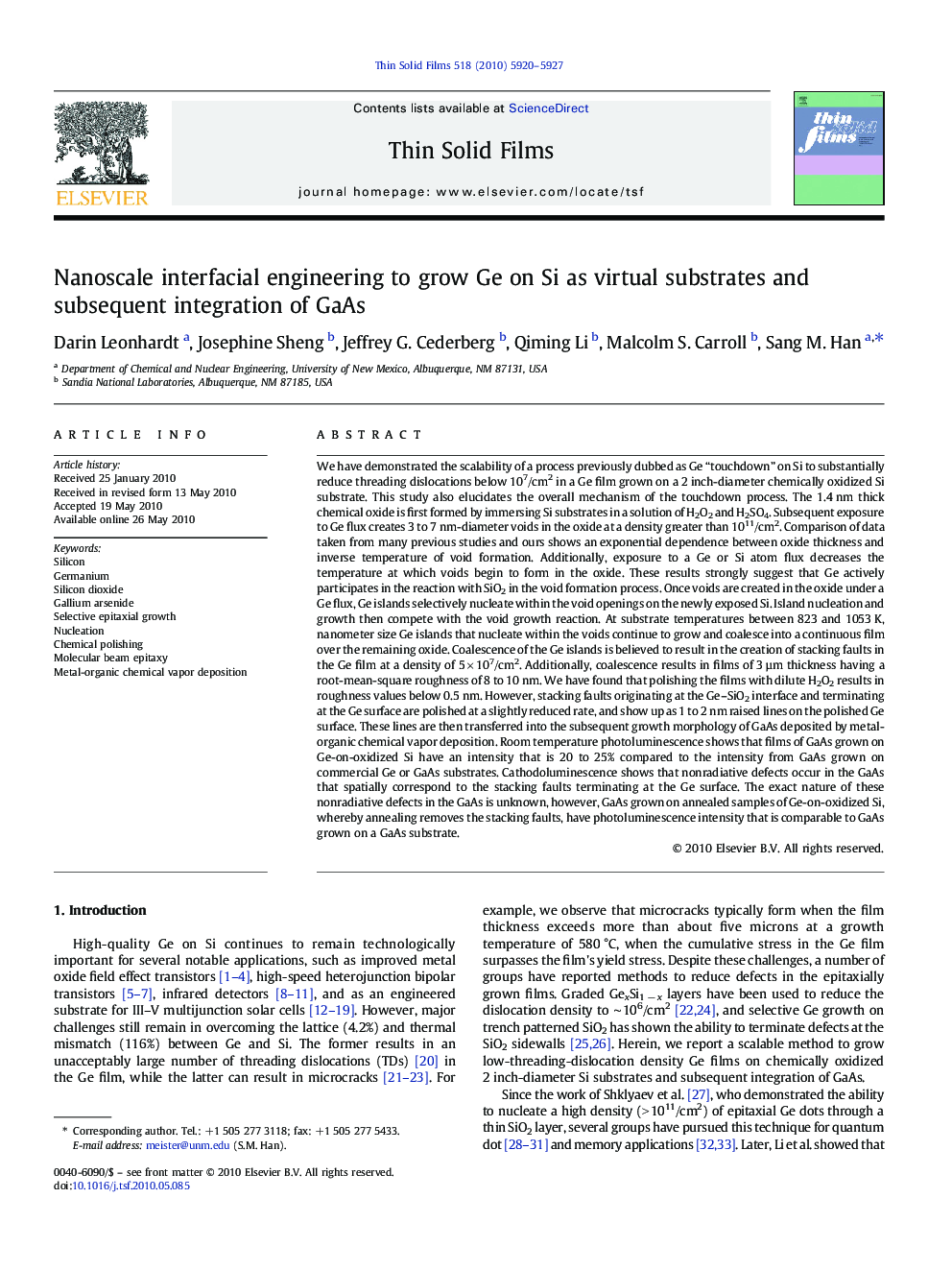| کد مقاله | کد نشریه | سال انتشار | مقاله انگلیسی | نسخه تمام متن |
|---|---|---|---|---|
| 1670773 | 1008904 | 2010 | 8 صفحه PDF | دانلود رایگان |

We have demonstrated the scalability of a process previously dubbed as Ge “touchdown” on Si to substantially reduce threading dislocations below 107/cm2 in a Ge film grown on a 2 inch-diameter chemically oxidized Si substrate. This study also elucidates the overall mechanism of the touchdown process. The 1.4 nm thick chemical oxide is first formed by immersing Si substrates in a solution of H2O2 and H2SO4. Subsequent exposure to Ge flux creates 3 to 7 nm-diameter voids in the oxide at a density greater than 1011/cm2. Comparison of data taken from many previous studies and ours shows an exponential dependence between oxide thickness and inverse temperature of void formation. Additionally, exposure to a Ge or Si atom flux decreases the temperature at which voids begin to form in the oxide. These results strongly suggest that Ge actively participates in the reaction with SiO2 in the void formation process. Once voids are created in the oxide under a Ge flux, Ge islands selectively nucleate within the void openings on the newly exposed Si. Island nucleation and growth then compete with the void growth reaction. At substrate temperatures between 823 and 1053 K, nanometer size Ge islands that nucleate within the voids continue to grow and coalesce into a continuous film over the remaining oxide. Coalescence of the Ge islands is believed to result in the creation of stacking faults in the Ge film at a density of 5 × 107/cm2. Additionally, coalescence results in films of 3 µm thickness having a root-mean-square roughness of 8 to 10 nm. We have found that polishing the films with dilute H2O2 results in roughness values below 0.5 nm. However, stacking faults originating at the Ge–SiO2 interface and terminating at the Ge surface are polished at a slightly reduced rate, and show up as 1 to 2 nm raised lines on the polished Ge surface. These lines are then transferred into the subsequent growth morphology of GaAs deposited by metal-organic chemical vapor deposition. Room temperature photoluminescence shows that films of GaAs grown on Ge-on-oxidized Si have an intensity that is 20 to 25% compared to the intensity from GaAs grown on commercial Ge or GaAs substrates. Cathodoluminescence shows that nonradiative defects occur in the GaAs that spatially correspond to the stacking faults terminating at the Ge surface. The exact nature of these nonradiative defects in the GaAs is unknown, however, GaAs grown on annealed samples of Ge-on-oxidized Si, whereby annealing removes the stacking faults, have photoluminescence intensity that is comparable to GaAs grown on a GaAs substrate.
Journal: Thin Solid Films - Volume 518, Issue 21, 31 August 2010, Pages 5920–5927